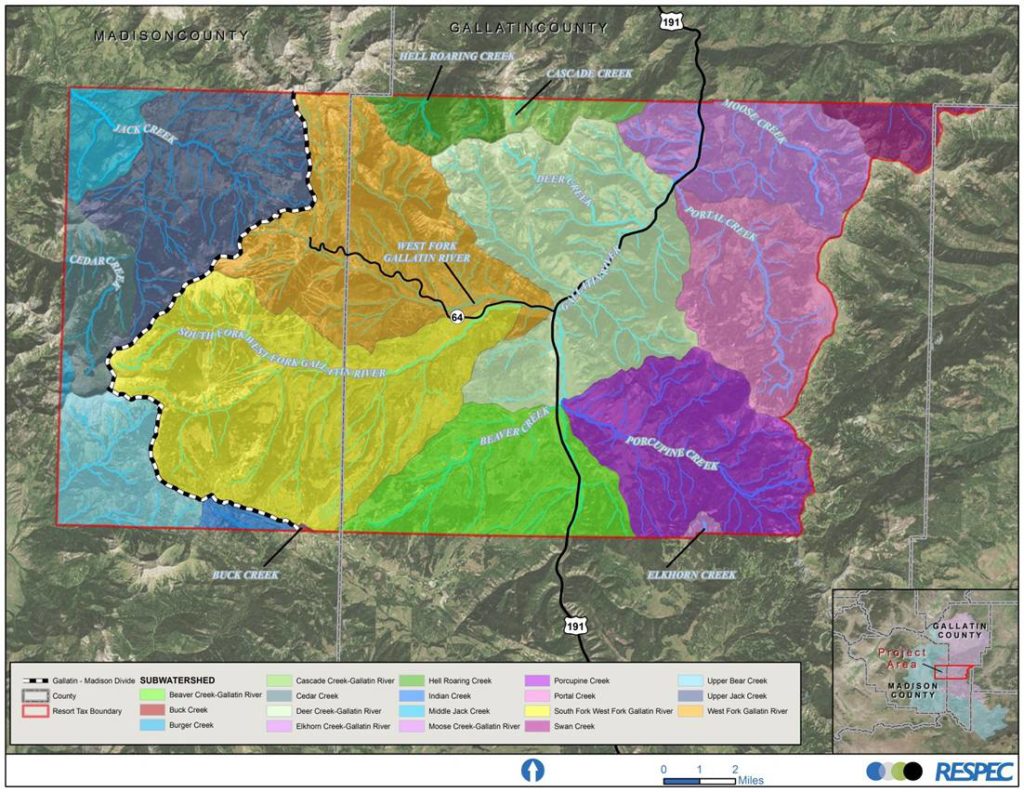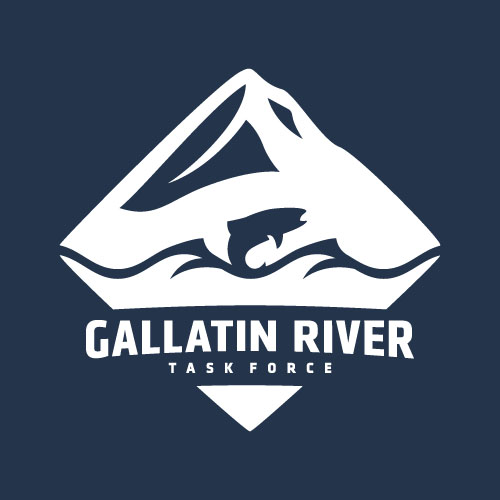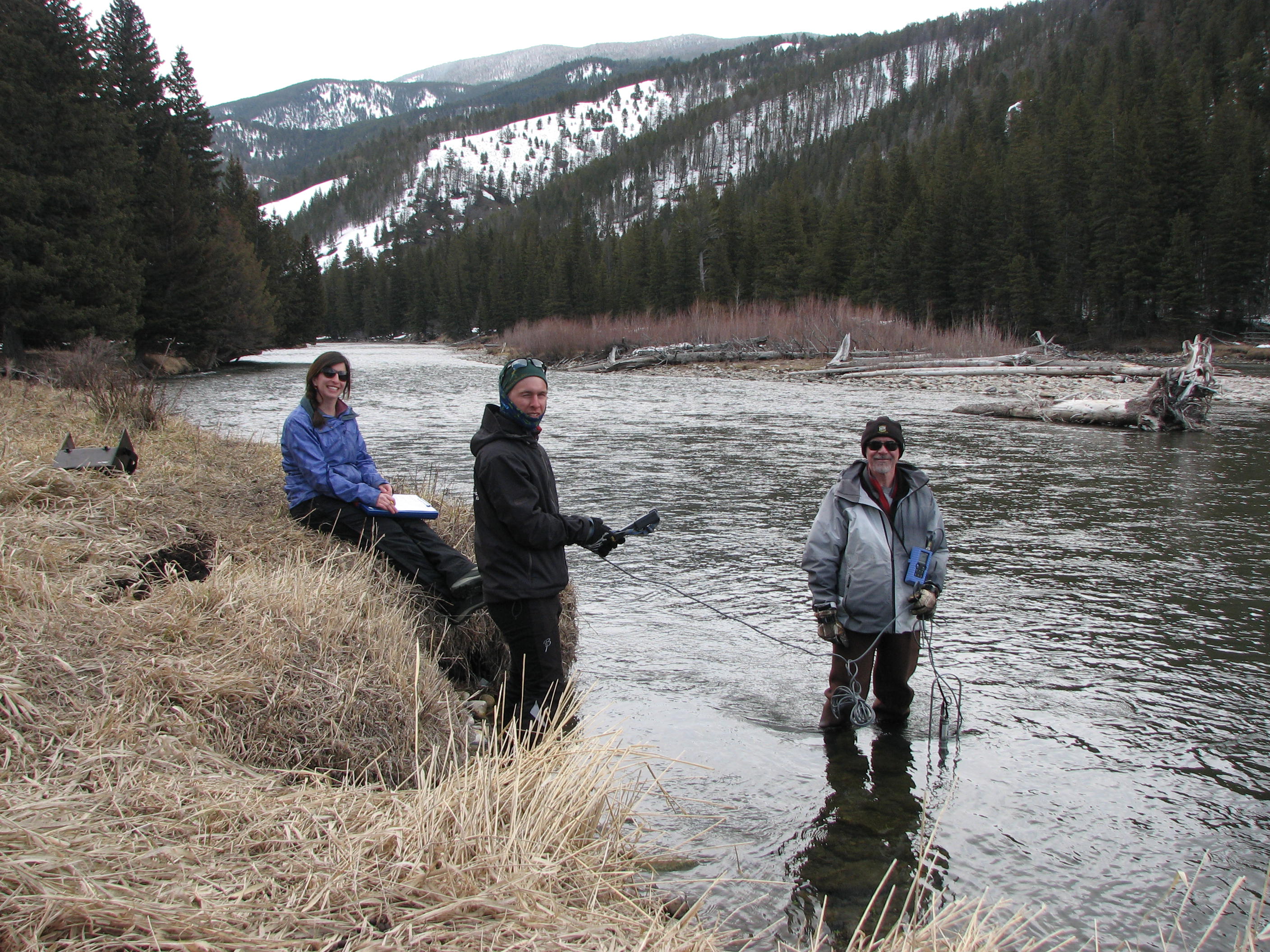By Karen Filipovich, Professional Facilitator
A group of stakeholders met to discuss the ecological health of the Big Sky area river systems during the second Big Sky Sustainable Water Solutions Forum meeting on August 31, 2016.
As home to headwaters for both the Gallatin and Madison rivers, this area makes up part of the headwaters of the Missouri River. Big Sky residents fish, recreate, and enjoy the scenic and ecological values of streams, riparian and wetland areas. So do visitors: an estimate of recreational use amounts to $40-56 million/year.

Map showing the major river systems in the Big Sky area, defined by the Big Sky Resort Tax District.
Several stakeholders of the Big Sky Sustainable Water Solutions Forum stated that Big Sky wouldn’t exist without its streams. But what do we know about the ecological health of the river systems?
Six panelists presented information on watersheds, water quality standards, monitoring and water quality trends, fisheries, and wetlands to help develop a unified understanding of current conditions, considerations, and potential challenges.
The Montana Department of Environmental Quality classifies streams based on their beneficial uses. These include cold water fisheries, recreation, and drinking water. Water quality standards are guidelines that inform management and permitting to support beneficial uses. In the Big Sky area, three impaired streams do not meet all water quality standards: the West Fork of the Gallatin River, the Middle Fork of the West Fork of the Gallatin River, and the South Fork of the West Fork of the Gallatin River.
Water quality monitoring is used to characterize the health of rivers and track changes over time. The Task Force has monitored water quality since 2000 on the Gallatin River system and the Madison Conservation District has been monitoring Jack Creek since 2006. Nutrients, sediment, and E.coli are elevated in the impaired streams in the Big Sky area. The Gallatin River Task Force has put in place a Nitrogen Reduction Plan that includes the West Fork restoration project, education, septic system, and a dog waste station.
Wetlands are important for water storage and filtration, wildlife, and flood control. However, the available maps of wetlands in the Big Sky do not cover the entire area, since most mapping has been completed as development has progressed or were completed using less accurate remote sensing techniques. More information would be useful to characterize where best to target wetland conservation and potential restoration efforts.
Fisheries are a substantial economic driver in the Big Sky area and increased sediment and nutrients in streams can influence fish populations. As with many other places, the native cutthroat trout population has declined over time, while introduced fish, such as rainbow trout, thrive.
Montanans for Healthy Rivers is a coalition working to preserve the Gallatin River’s water quality and free-flowing character through a Wild and Scenic River designation. This designation would affect federally permitted actions that would negatively impact water quality, flow, outstanding values, but would not affect local and state permitting and regulations.
Further information and resources are available on the Big Sky Sustainable Water Solutions Forum project page. The next stakeholder meeting will be on September 28, focused on water supply. A community town hall meeting will be held on December 6, from 4-5:30pm at Buck’s T-4 Lodge to present information and to hear questions and input from community members.
The Big Sky Sustainable Water Solutions Forum would not be possible without the support of the Big Sky Resort Tax, Gallatin County, Madison County, Yellowstone Club, Lone Mountain Land Company, and Big Sky Water and Sewer District.

